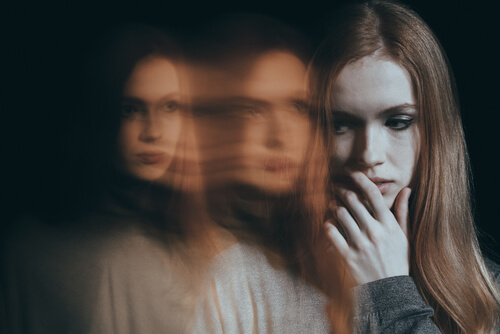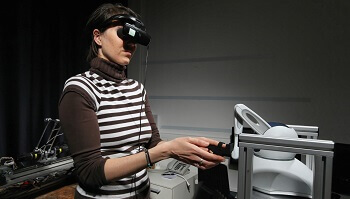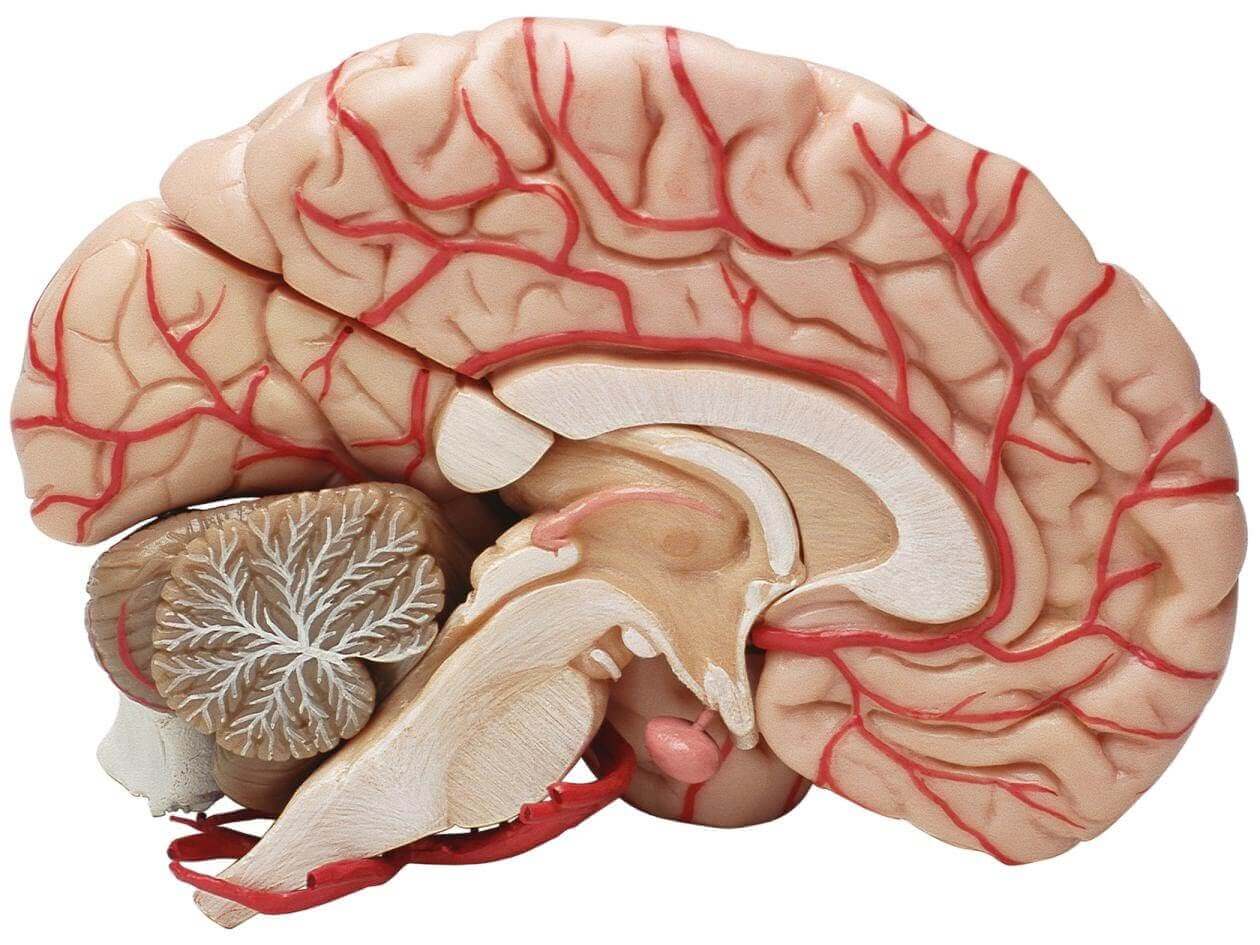Feeling of a Presence, is There Someone Here With Us?

Maybe you have at some point felt like there was someone in the same room as you. However, you look around and find that you’re alone. That feeling of a presence, of feeling like someone is near you, is a phenomenon that happens more frequently than we’d like to think. And that doesn’t make it any less terrifying…
The phenomenon we’re referring to is a very real thing for many people. Those who experience it feel like there is someone close to them, even though they can’t see the being. The person has the feeling that they are not alone, even though there is no one around them. They are also not able to clearly identify any stimulus which can support the sensation. Such as a voice, music, or any other similar sign.

Is there a ghost standing next to you?
Scientists have tried to explain this phenomenon rationally and scientifically. To do this, an experiment was conducted in which some people were allowed to “feel” this experience. The scientists recruited 48 volunteers who had never experienced this feeling of presence before. They did so to alter certain neuronal signals in specific areas of the brain.
With their eyes blindfolded, the volunteers had to manipulate a robot manually. At the same time, another robot copied the same movements they made behind the volunteers. The results were surprising. When the movements happened at the same time, the individuals didn’t feel anything out of the ordinary.
However, when the movements didn’t happen simultaneously, they felt the presence of a ghost. Specifically, a third of the volunteers stated that they felt someone in the room with them. Some individuals even became so frightened they asked for the blindfold to be removed and the experiment to end.
This same team of researchers performed a brain scan of 12 people with neurological alterations who had already experienced this feeling of presence. The objective was to determine what part of the brain was associated with this phenomenon. The experiment confirmed that the implicated cerebral regions were those associated with self-awareness, movement, and the spatial positioning of one’s own body.

The brain is the only thing responsible for the feeling of presence
The results of the previous studies clear up the fact that the robot’s movements temporarily changed our brain function. When individuals felt the presence of a ghost, their brains were confused. The brain miscalculated the position of the body and identified it as belonging to another being.
When the brain presents some type of neurological anomaly, or when a robot stimulates it, it can create a second representation of its own body. This is perceived as a strange presence by the individual. This presence performs the same movements as the individual and maintains the same position.
“The human mind works as a whole. It is not the senses, but the individual, which perceives.”
-J.L. Pinillos-
The psychology of imagination
The psychopathology of imagination and perception constitutes a central theme for all psychopathological research. In fact, psychological research has given way to a good number of explicative theories about perception and imagination. Nevertheless, these theories differ in many aspects.
Hope is a clear example that perception is not “objectively” determined. Perception is not solely influenced by the physical traits of the stimulus we perceive. In the process of perceiving something, the body must react to stimuli based on its predispositions, expectations, and previous experiences.
“In a certain sense, we are capable of reaching beyond the information provided by context.”
-Amparo Belloch-
This leads us to say that our perceptive process is not guided solely by data, but also by our ideas, judgment, and concepts. For example, if we believe in ghosts, upon experiencing the feeling of a presence, we’ll truly believe that a ghost has appeared beside us.
But, how do we know that certain events are actually happening? As Helmholtz pointed out over a century ago, it shouldn’t be so obvious that an object is red, green, cold, or hot. These sensations belong to our nervous system and not the object itself.

Thus, the strange thing is that we perceive objects “externally”. But the process, which is our immediate experience, occurs “internally.” However, other kinds of experiences, such as dreams, imagination, or thoughts, are experienced “internally. “It’s important to remember that judgment and interpretation intervene in the act of perceiving something. This implies that perceptive inaccuracies and deceit or mistakes of the senses are as normal as accuracies. At least they are in terms of probability (Slade and Bentall, 1988).
The feeling of a presence is a perceptive distortion
Perception and imagination disorders are usually classified into two groups: distortions and perceptions of deception. Perceptive distortions are only possible through the senses. These distortions are produced when a stimulus which exists outside of ourselves is perceived differently than expected.
Plus, in many cases, these perceptive distortions originate from organic disorders. These disorders tend to be transitory and can affect the reception of stimuli by the senses as well as the interpretation performed by the brain.
In the cases of deception, a new perceptive experience is produced which is not founded on stimuli that actually exist outside of the person. This is the case, for example, of hallucinations.
Plus, this perceptive experience tends to be accompanied by the rest of the person’s “normal” perceptions. Lastly, the perception continues even though the stimulus which produced the initial perception is no longer physically present.
How is the feeling of a presence classified? If you look over the past few paragraphs, the feeling of presence could fit into perceptive distortions which we can classify in the following manner:
- Hyperesthesias versus hypoesthesias – abnormalities in the perception of intensity (for example, in the intensity of pain).
- Abnormalities in the perception of quality.
- Metamorphopsias – anomalies in the perception of size and/or shape.
- Abnormalities in perceptual integration.
- Illusions – this is where we would find the presence of sensation and pareidolias. Pareidolias refer to the psychological phenomena of seeing images, figures, and faces. You perceive familiar forms where there are none, which is a very common game among children.

If I feel the presence of a ghost, am I having an illusion?
Indeed, according to researchers and based on the previous classification, it seems so. An illusion is a perceptive distortion in the sense that it is a mistaken perception of a concrete object. Daily life offers us an abundance of examples of illusory experiences.
How many times have you thought you saw a friend you were waiting for, but it wasn’t them? Who hasn’t heard steps behind them while they walked down a dark lonely alley? Who hasn’t felt someone’s presence (ghost or not) when there was actually no one else in the room?
If you have ever experienced the feeling of a presence, don’t worry. Feeling the presence of “someone” is not a sign that you’re going crazy. This phenomenon can occur during certain vital events, such as extreme exhaustion or extreme loneliness.
However, a sensation of presence is also associated with certain specific states. For example, anxiety and pathological fears, schizophrenia, hysteria, and organic mental disorders. In this case, we recommend that you seek the help of a professional. They should evaluate your case in detail.
Maybe you have at some point felt like there was someone in the same room as you. However, you look around and find that you’re alone. That feeling of a presence, of feeling like someone is near you, is a phenomenon that happens more frequently than we’d like to think. And that doesn’t make it any less terrifying…
The phenomenon we’re referring to is a very real thing for many people. Those who experience it feel like there is someone close to them, even though they can’t see the being. The person has the feeling that they are not alone, even though there is no one around them. They are also not able to clearly identify any stimulus which can support the sensation. Such as a voice, music, or any other similar sign.

Is there a ghost standing next to you?
Scientists have tried to explain this phenomenon rationally and scientifically. To do this, an experiment was conducted in which some people were allowed to “feel” this experience. The scientists recruited 48 volunteers who had never experienced this feeling of presence before. They did so to alter certain neuronal signals in specific areas of the brain.
With their eyes blindfolded, the volunteers had to manipulate a robot manually. At the same time, another robot copied the same movements they made behind the volunteers. The results were surprising. When the movements happened at the same time, the individuals didn’t feel anything out of the ordinary.
However, when the movements didn’t happen simultaneously, they felt the presence of a ghost. Specifically, a third of the volunteers stated that they felt someone in the room with them. Some individuals even became so frightened they asked for the blindfold to be removed and the experiment to end.
This same team of researchers performed a brain scan of 12 people with neurological alterations who had already experienced this feeling of presence. The objective was to determine what part of the brain was associated with this phenomenon. The experiment confirmed that the implicated cerebral regions were those associated with self-awareness, movement, and the spatial positioning of one’s own body.

The brain is the only thing responsible for the feeling of presence
The results of the previous studies clear up the fact that the robot’s movements temporarily changed our brain function. When individuals felt the presence of a ghost, their brains were confused. The brain miscalculated the position of the body and identified it as belonging to another being.
When the brain presents some type of neurological anomaly, or when a robot stimulates it, it can create a second representation of its own body. This is perceived as a strange presence by the individual. This presence performs the same movements as the individual and maintains the same position.
“The human mind works as a whole. It is not the senses, but the individual, which perceives.”
-J.L. Pinillos-
The psychology of imagination
The psychopathology of imagination and perception constitutes a central theme for all psychopathological research. In fact, psychological research has given way to a good number of explicative theories about perception and imagination. Nevertheless, these theories differ in many aspects.
Hope is a clear example that perception is not “objectively” determined. Perception is not solely influenced by the physical traits of the stimulus we perceive. In the process of perceiving something, the body must react to stimuli based on its predispositions, expectations, and previous experiences.
“In a certain sense, we are capable of reaching beyond the information provided by context.”
-Amparo Belloch-
This leads us to say that our perceptive process is not guided solely by data, but also by our ideas, judgment, and concepts. For example, if we believe in ghosts, upon experiencing the feeling of a presence, we’ll truly believe that a ghost has appeared beside us.
But, how do we know that certain events are actually happening? As Helmholtz pointed out over a century ago, it shouldn’t be so obvious that an object is red, green, cold, or hot. These sensations belong to our nervous system and not the object itself.

Thus, the strange thing is that we perceive objects “externally”. But the process, which is our immediate experience, occurs “internally.” However, other kinds of experiences, such as dreams, imagination, or thoughts, are experienced “internally. “It’s important to remember that judgment and interpretation intervene in the act of perceiving something. This implies that perceptive inaccuracies and deceit or mistakes of the senses are as normal as accuracies. At least they are in terms of probability (Slade and Bentall, 1988).
The feeling of a presence is a perceptive distortion
Perception and imagination disorders are usually classified into two groups: distortions and perceptions of deception. Perceptive distortions are only possible through the senses. These distortions are produced when a stimulus which exists outside of ourselves is perceived differently than expected.
Plus, in many cases, these perceptive distortions originate from organic disorders. These disorders tend to be transitory and can affect the reception of stimuli by the senses as well as the interpretation performed by the brain.
In the cases of deception, a new perceptive experience is produced which is not founded on stimuli that actually exist outside of the person. This is the case, for example, of hallucinations.
Plus, this perceptive experience tends to be accompanied by the rest of the person’s “normal” perceptions. Lastly, the perception continues even though the stimulus which produced the initial perception is no longer physically present.
How is the feeling of a presence classified? If you look over the past few paragraphs, the feeling of presence could fit into perceptive distortions which we can classify in the following manner:
- Hyperesthesias versus hypoesthesias – abnormalities in the perception of intensity (for example, in the intensity of pain).
- Abnormalities in the perception of quality.
- Metamorphopsias – anomalies in the perception of size and/or shape.
- Abnormalities in perceptual integration.
- Illusions – this is where we would find the presence of sensation and pareidolias. Pareidolias refer to the psychological phenomena of seeing images, figures, and faces. You perceive familiar forms where there are none, which is a very common game among children.

If I feel the presence of a ghost, am I having an illusion?
Indeed, according to researchers and based on the previous classification, it seems so. An illusion is a perceptive distortion in the sense that it is a mistaken perception of a concrete object. Daily life offers us an abundance of examples of illusory experiences.
How many times have you thought you saw a friend you were waiting for, but it wasn’t them? Who hasn’t heard steps behind them while they walked down a dark lonely alley? Who hasn’t felt someone’s presence (ghost or not) when there was actually no one else in the room?
If you have ever experienced the feeling of a presence, don’t worry. Feeling the presence of “someone” is not a sign that you’re going crazy. This phenomenon can occur during certain vital events, such as extreme exhaustion or extreme loneliness.
However, a sensation of presence is also associated with certain specific states. For example, anxiety and pathological fears, schizophrenia, hysteria, and organic mental disorders. In this case, we recommend that you seek the help of a professional. They should evaluate your case in detail.
All cited sources were thoroughly reviewed by our team to ensure their quality, reliability, currency, and validity. The bibliography of this article was considered reliable and of academic or scientific accuracy.
- Belloch, A (2008). Manual de psicopatología. McGraw-Hill. Madrid.
- Persinger, M. A., Tiller, S. G., & Koren, S. A. (2000). Experimental simulation of a haunt experience and elicitation of paroxysmal electroencephalographic activity by transcerebral complex magnetic fields: induction of a synthetic “ghost”?. Perceptual and Motor Skills, 90(2), 659-674.
- Eckersley, T. (2018). Sounds Scary. Student Research Proceedings, 3(2).
This text is provided for informational purposes only and does not replace consultation with a professional. If in doubt, consult your specialist.







